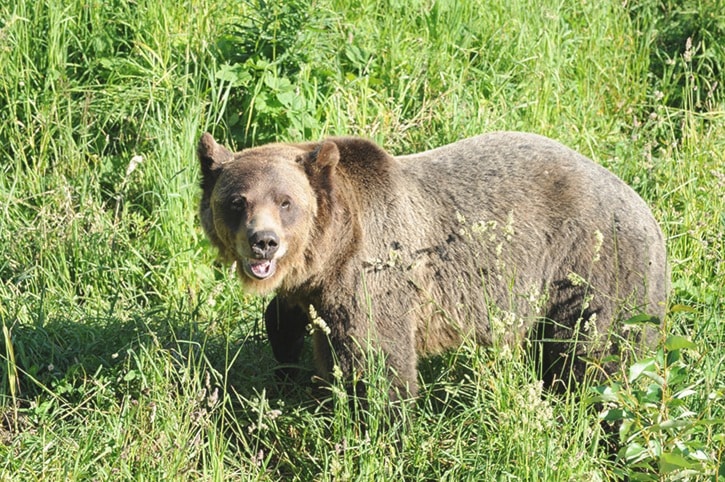They say — and we’re not quite sure who "they" are — the computer age is supposedly making us smarter, including the addictive smart phone.
Now, watching several individuals over the course of this past summer, their heads bent down walking into traffic without due attention — thankfully the drivers were attentive — it struck me that this example of societal behaviour belies the statement that we’re getting smarter. And when it concerns nature, wow, the on-line stories and myths are beyond all comprehension. I mean, there are individuals who have outrun grizzlies! My only question is, why aren’t they representing Canada in the 100-meter sprint? Gold-medal performance, or gold-medal yarn?
This year we had some excellent behavioural observations of grizzlies and one boar in particular, on a south face slope in the alpine meadow. As we came around a rock outcrop, approximately 50 meters away was our boar heading in our direction. Upon noticing us he sat down abruptly and then went to all fours immediately and began smacking the ground. Most books and sources indicate that this activity is a prelude to a potential charge, and there is some truth to this. But many stories and safety pamphlets are generalities and do not deal with all the specifics; just like forensics, there are many issues to consider.
In our particular case the wind was directly at our back and the grizzly wasn’t feeding but was making a bee line directly down wind. Due to the direction we had come from — not upwind until we came to the outcrop — and the reaction of the bear, we were a bit of a surprise package in the path toward his intended destination.
It was through a few interactions over the years that the pawing behaviour and human response was accidentally discovered, and in all cases we were directly upwind. It was noted that moving off the wind trail and allowing the bear to have free access to its scent trail, that the pawing action was discontinued and the bears in question for the most part continued on their acquired scent, a few making excessive detours to reacquire the scent trail. On this occasion, we basically moved up the rocky outcrop and off the scent trail. Our boar relaxed and, after a short period of observing us, continued on to his destination. If we had remained still in his scent path, his stress level would have increased and he quite possibly could have charged.
That evening in camp we relived the active day we had with the grizzly and mountain goats. The pre-teen brother and sister along on that trip expressed their fear of the grizzly and yet stated that they were entirely comfortable with the mountain goats, which they had no fear of.
Warranted or not, grizzlies do have a fearsome reputation. But I believe that more than 98 per cent of all negative interactions between bears and humans are avoidable, and this was reinforced by a number of stories and our encounter that day, and two very powerful words when it concerns nature are true: knowledge and respect. Something computers don’t teach. We further discussed the reality that a mountain goat could kill a human just as easily as a grizzly, and again, the word respect was used concerning the behaviour of different species. Of course most folks use the “bears are unpredictable" defence; but bears are no more unpredictable than humans, and from my perspective humans are a lot more scary than any bear I’ve ever encountered.
What's truly scary are stats that show more than 85 per cent of Canadians are afraid of the wilderness, and history has shown that man destroys what he is afraid of; you only have to look at the wolf. And with our obese faces glued to computer monitors and smart phones our fear will only grow. How, then, will we protect what we fear?
